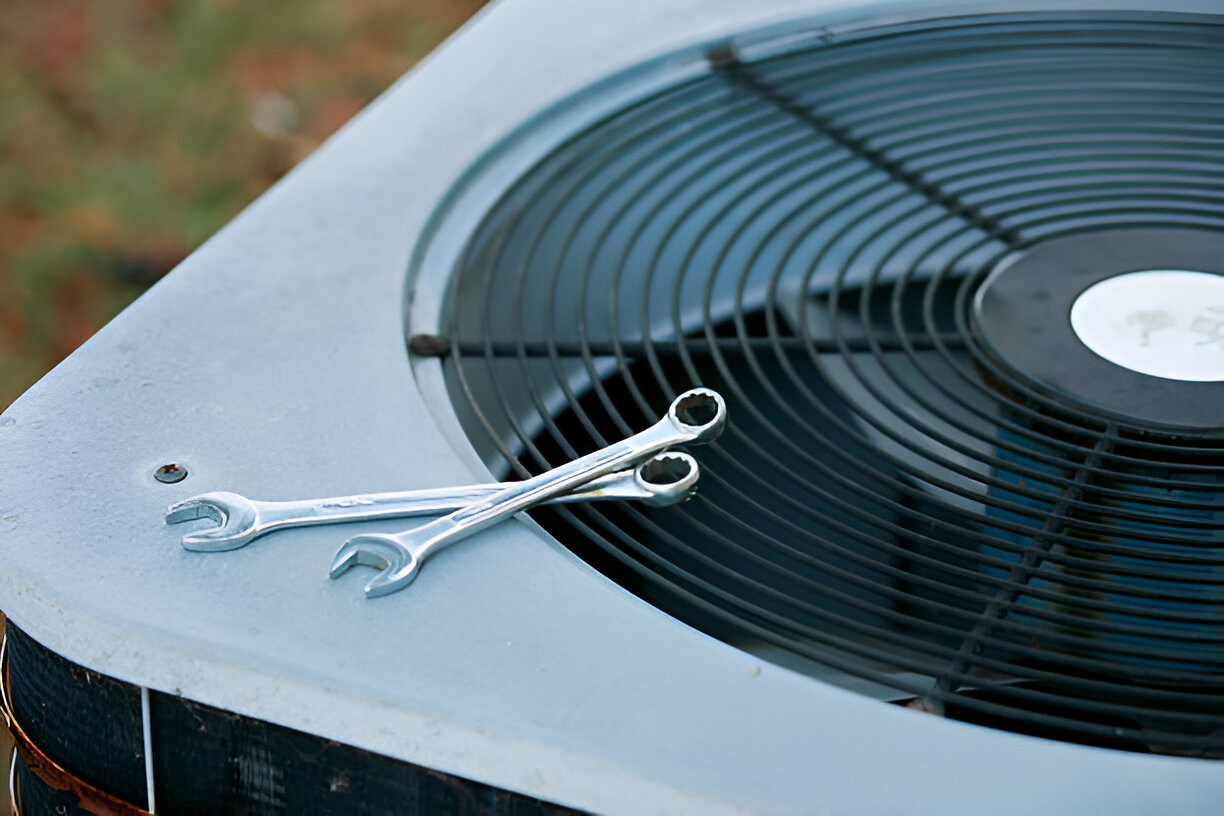HVAC Replacement in Rio Verde, AZ
Replacing an HVAC system is one of the most impactful home investments for comfort and energy savings—especially in Rio Verde, AZ, where long, hot summers and dusty monsoon seasons put extra strain on cooling equipment.

Why Rio Verde homeowners replace HVAC systems
Common triggers for replacement include:
- Older equipment reaching the end of its useful life (typically 12 to 15+ years)
- Frequent breakdowns and rising repair costs
- Noticeable loss of cooling capacity or uneven temperatures
- Sharp increases in electric bills
- Outdated refrigerant or equipment no longer efficient or repairable
- Plans to improve indoor air quality or upgrade to modern controls
Local factors in Rio Verde that accelerate replacement needs: high summer temperatures, intense sunlight that increases cooling loads, monsoon-related dust that accelerates component wear, and many homes on larger lots where duct runs and zoning become more complex.
Common HVAC replacement issues in Rio Verde, AZ
- Undersized systems that short-cycle and fail to dehumidify
- Leaky, poorly insulated ductwork that wastes conditioned air
- Single-speed equipment that struggles with large temperature swings
- Compatibility problems between new outdoor units and existing indoor coils
- Poor airflow caused by dirty filters, undersized returns, or improper blower settings
On-site assessment and accurate load calculations
A proper replacement begins with a detailed, on-site assessment and a room-by-room load calculation (Manual J quality). This evaluates:
- Home square footage, orientation, window types and shading
- Insulation levels, attic conditions, and roof color/reflectivity
- Number of occupants, typical schedules, and heat-generating appliances
- Existing duct layout, insulation, and leakage points
Accurate sizing prevents short-cycling from oversized equipment and underperformance from undersized units. In Rio Verde, orientation to the afternoon sun and attic temperatures are especially important when determining cooling capacity.
Ductwork evaluation and system compatibility
A new outdoor condensing unit must be properly matched to the indoor coil and the duct system for optimal performance. A thorough duct evaluation includes:
- Measuring static pressure and airflow
- Inspecting for leaks, crushed or disconnected sections, and poor insulation
- Checking return locations and balancing for even temperature distribution
- Recommending repairs or upgrades when ducts are undersized or heavily leaky
Many Rio Verde homes have longer duct runs or retrofitted systems; addressing duct issues during replacement is essential to realize the efficiency gains of a new system.
Energy-efficient equipment recommendations (including Day & Night systems)
We recommend selecting high-efficiency, matched systems built for desert climates. Key features to consider:
- High SEER ratings for lower seasonal cooling costs
- Variable-speed or two-stage compressors for better comfort and humidity control
- ECM blower motors for steady airflow and reduced energy use
- Matched indoor coils and refrigerant-compatible components
- Modern thermostats with scheduling and remote control capability
Day & Night systems are a featured option because of their proven reliability in Arizona climates and available financing programs. When paired with proper installation and duct optimization, these systems deliver significant long-term savings and consistent comfort.
Equipment sizing and selection process
Equipment selection balances efficiency, capacity, and budget while considering:
- Manual J load calculation results
- Duct system condition and possible modifications
- Desired operation characteristics (single-stage vs variable-speed)
- Long-term operating cost projections and local energy rates
Selecting the right size and features reduces energy waste, improves humidity control, and extends equipment life.
Professional removal, disposal, and refrigerant handling
Removal of the old system follows industry and environmental requirements:
- Certified handling and recovery of refrigerants per EPA standards
- Responsible disposal and recycling of metal and electronic components
- Cleaning and preparation of the installation siteProper disposal protects the environment and ensures no legacy components undermine the new system.
Permits, code compliance, and project timeline
HVAC replacement includes necessary permits and inspections to meet Arizona and local code requirements. Typical project phases:
- On-site assessment and written estimate
- Permit application and scheduling
- Equipment delivery and site prep
- Removal of old equipment and duct modifications (if needed)
- Installation of new system, electrical, and controls
- Inspection and commissioning
Most standard full-system replacements in single-family homes are completed within 1 to 3 days, depending on ductwork work and permit timing. Complex projects with zoning or major duct reconstruction may require additional time.
Clear cost estimate and financing options
A complete estimate outlines equipment, labor, permit fees, and recommended ductwork repairs. Financing options are available to make replacement more manageable, including plans through Synchrony and Wells Fargo. Special financing promotions for qualifying Day & Night equipment (for example, promotional 0% APR offers with set monthly payments subject to approval) are often available for homeowners who meet program terms.
Warranty, maintenance plans, and post-installation verification
A dependable replacement includes:
- Manufacturer warranty on equipment and compressor
- Labor warranty on installation components
- Recommended maintenance plans for seasonal inspections, refrigerant charge checks, and filter and coil cleanings
After installation, technicians perform comprehensive testing and performance verification:
- Airflow measurement and static pressure checks
- Refrigerant charge verification and leak inspection
- Thermostat calibration and system control testing
- Temperature drop and humidity performance validation
These checks confirm the system meets design expectations and delivers promised efficiency.
Tips to maximize long-term energy savings and comfort in Rio Verde
- Seal and insulate ducts, especially in attics and crawl spaces
- Add attic ventilation or radiant barriers to reduce attic heat gain
- Use smart or programmable thermostats to optimize setpoints by schedule
- Install high-quality filters and replace them regularly, particularly during monsoon season
- Add shading or reflective film to west- and south-facing windows
- Consider zoning or additional returns for multi-level or large-footprint homes
- Schedule seasonal maintenance to maintain efficiency and prevent costly failures
Customer Testimonials
Hear directly from our customers about the quality, honesty, and care we bring to every job.










